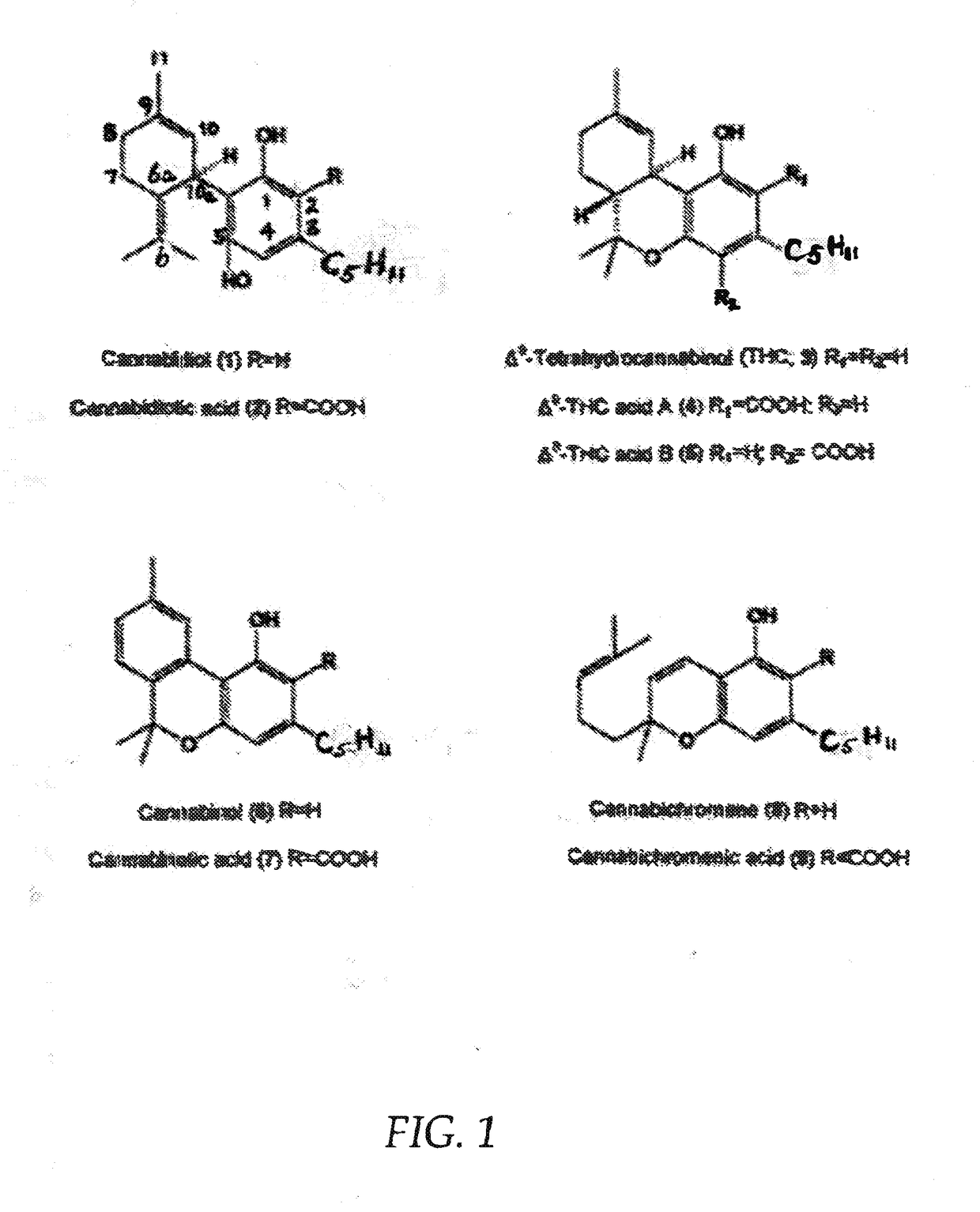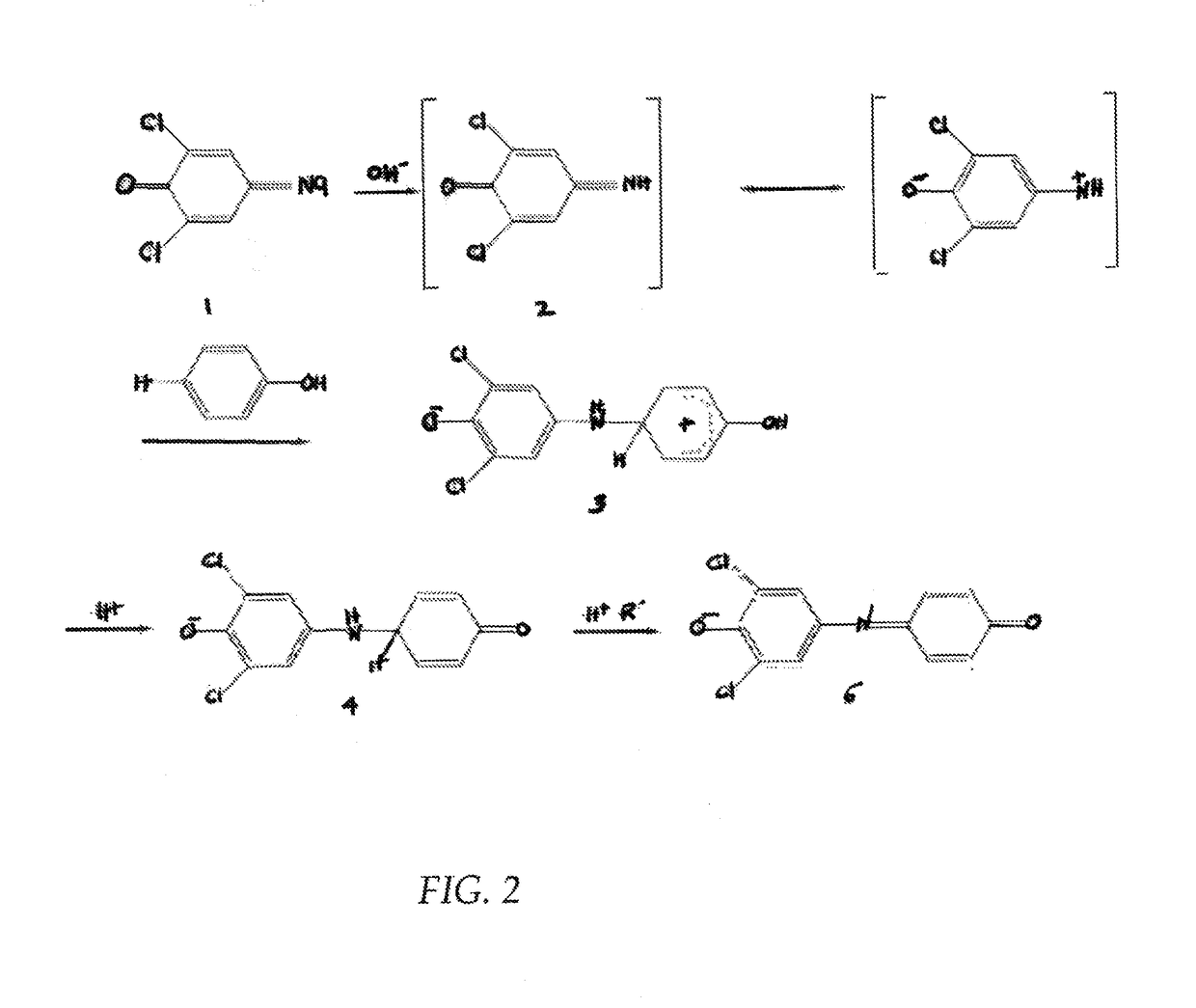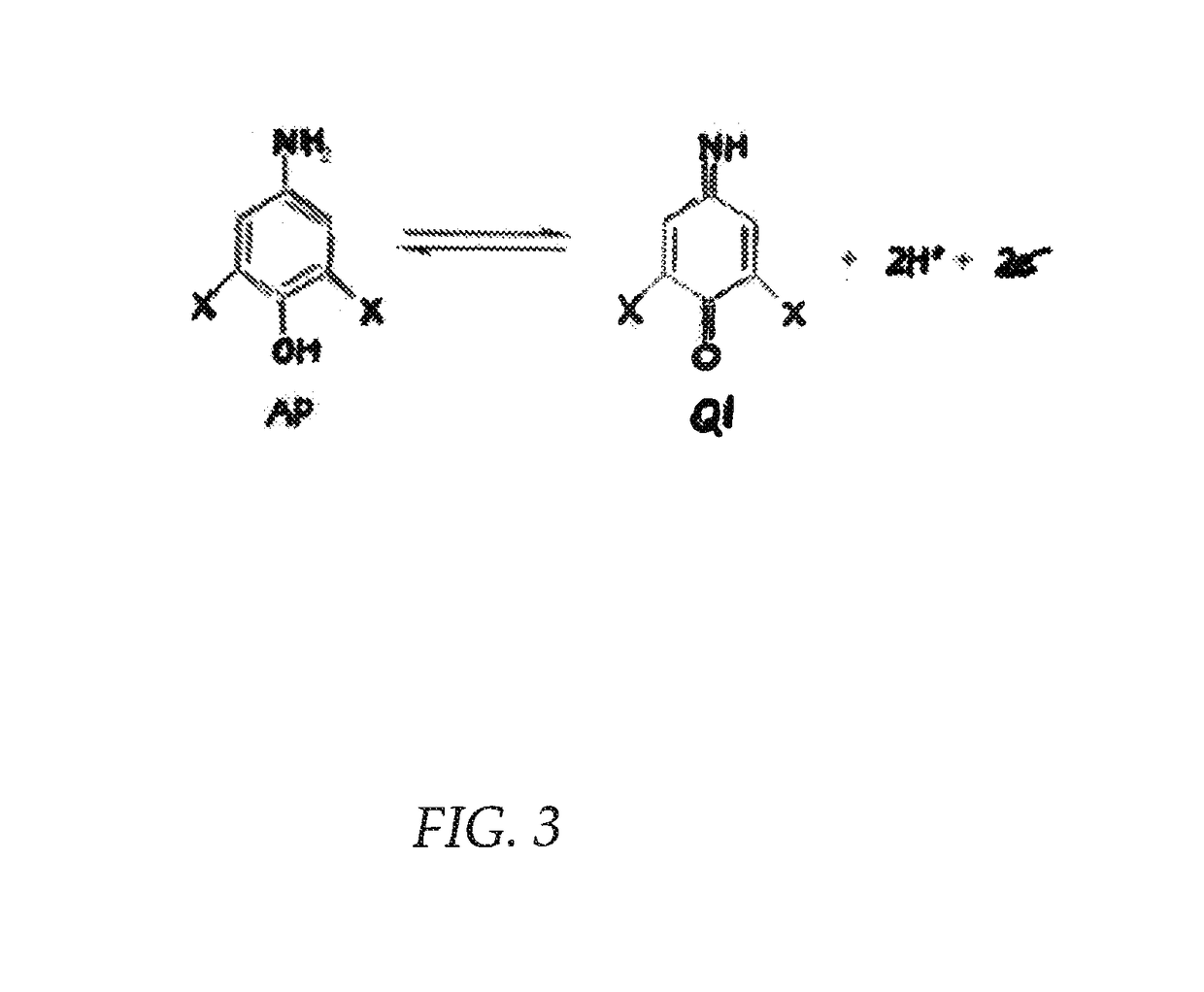Distributable Chemical Sampling and Sensing System
a sampling and sensing system technology, applied in the direction of instruments, material electrochemical variables, testing food, etc., can solve the problems of increased legislative limits, harmful to human health, and inability to ensure the complete absence of residues in organic agriculture products, and achieve excellent adsorption properties and high surface area
- Summary
- Abstract
- Description
- Claims
- Application Information
AI Technical Summary
Benefits of technology
Problems solved by technology
Method used
Image
Examples
example 1
[0145]Sampling Procedures to determined cannabinoids in hemp products for by means of GC-MS. Sample preparation, extraction and gas chromatographic separation conditions were derived from a literature reference [51]. These are summarized below:
[0146]Reagents and Materials
[0147]Cannabidiol (CBD), cannabinol (CBN), Δ9-tetrahydrocannabinol (THC), and Δ9-tetrahydrocannabinol-d3 (THC-d3) were purchased from Promochem (Wesel, Germany). N-methyl-N-trimethylsilyltrifluoroacetamide (MSTFA) was obtained from Macherey-Nagel (Düren, Germany). A SPME device for an autosampler with a replaceable 100-μm polydimethylsiloxane (PDMS) fiber was obtained from Supelco (Deisenhofen, Germany). The SPME fiber was conditioned at 250° C. for one hour in the injection port of the gas chromatograph, according to the supplier's instructions. chemicals were purchased from Merck (Darmstadt, Germany).
[0148]GC-MS method
[0149]GC-MS analyses were carried out on a HP 6890 Series Plus gas chromatograph coupled to a 597...
example 2
[0165]Electrochemical Materials and Methods. Sample preparation, extraction and gas chromatographic separation conditions were derived from a literature reference [41]. These are summarized below:
[0166]Chemical and Materials:
[0167]All chemicals were of analytical grade and used as received without any further purification. These were Δ-tetrahydrocannabinol (HPLC grade, >90%, ethanol solution), 2,6-dichloro-p-aminophenol, phenol, and 4-phenylphenol, (>98%, Sigma-Aldrich).
[0168]Solutions were prepared with deionized water of resistivity not less than 18.2 MOhm cm−1 (Millipore Water Systems). Voltammetric measurements were carried out using a CH-650A potentiostat (CH Instruments, Austin, Tex.) with a three-electrode configuration. Glassy carbon electrodes (CH Instruments, Austin, Tex.) or carbon paste electrodes were used as working electrodes. Carbon paste was prepared from a mixture of 0.35 gram graphite and 0.1 gram Nujol oil, mixed by grinding in a mortar / pestle for 10-15 minutes. ...
PUM
| Property | Measurement | Unit |
|---|---|---|
| pH | aaaaa | aaaaa |
| temperature | aaaaa | aaaaa |
| temperature | aaaaa | aaaaa |
Abstract
Description
Claims
Application Information
 Login to View More
Login to View More - R&D
- Intellectual Property
- Life Sciences
- Materials
- Tech Scout
- Unparalleled Data Quality
- Higher Quality Content
- 60% Fewer Hallucinations
Browse by: Latest US Patents, China's latest patents, Technical Efficacy Thesaurus, Application Domain, Technology Topic, Popular Technical Reports.
© 2025 PatSnap. All rights reserved.Legal|Privacy policy|Modern Slavery Act Transparency Statement|Sitemap|About US| Contact US: help@patsnap.com



